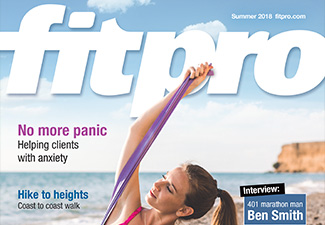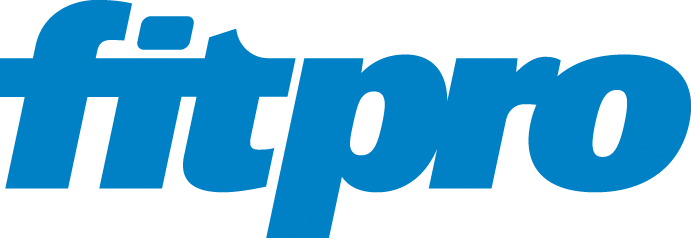Magazine References
Summer 2018

Pg 3
References
- Mind (2016), Mental Health Facts and Statistics. www.mind.org.uk, accessed on 4 June 2018.
- Conn VS (2010) Anxiety outcomes after physical activity interventions: meta-analysis findings, Nursing Research, 59(3): 224-231.
- Asmundson GJG, Fetzner MG, DeBoer LB, Powers MB, Otto MW & Smits JAJ (2013) Let’s get physical: a contemporary review of the anxiolytic effects of exercise for anxiety and its disorders, Depression and Anxiety, 30(4): 362-373.
- Mental Health (2016) How to Look After Your Mental Health Using Exercise. https://www.mentalhealth.org.uk, accessed on 4 June 2018.
Pg 8-9
References
- Lear S (2017) The effect of physical activity on mortality and cardiovascular disease in 130,000 people from 17 high-income, middle-income and low-income countries: the PURE study, The Lancet, 390(10,113): 2,643-2,654.
Pg 16-18
Recommended reading
- Lazarus NR & Harridge S (2007) Inherent ageing in humans: the case for studying master athletes, Scandinavian Journal of Medicine and Science in Sports, 17(5): 461-463. doi: 10.1111/j.1600-0838.2007.00726.x
- Pollock DR, Carter S, Velloso CP, Duggal NA, Lord JM, Lazarus NR & Harridge S (2015) An investigation into the relationship between age and physiological function in highly active older adults, The Journal of Physiology, 1;593(3): 657-80. doi: 10.1113/jphysiol.2014.282863
- Duggal NA, Pollock RD, Lazarus NR, Harridge S & Lord JM (2018) Major features of immunesenescence, including reduced thymic output, are ameliorated by high levels of physical activity in adulthood, Aging Cell, 17(2): e12750. doi: 10.1111/acel.2018.17.issue-2
Pg 34-36
References
- Matsen FA, Boileau P, Walch G, Gerber C & Bicknell RT (2007) The reverse total shoulder arthroplasty, J Bone Joint Surg Am, 89: 660-667
- Werner CM, Steinmann PA, Gilbart M, Gerber C (2005) Treatment of painful pseudoparesis due to irreparable rotator cuff dysfunction with the Delta III reverse-ball-and-socket total shoulder prosthesis, J Bone Joint Surg Am, 87: 1,476-1,486.
- Michener LA, McClure PW, Karduna AR (2003) Anatomical and biomechanical mechanisms of subacromial impingement syndrome, Clin Biomech, 18(5): 369-379.
- Masood U, Irfan Q, Mohsin A (2012) Subacromial impingement syndrome, Orthopedic Reviews.
- Neer C S, (1972) Anterior Acromioplasty for the Chronic Impingement Syndrome in the shoulder. The Journal of Bone and Joint Surgery.
- Bigliani LU, Morrison DS, April EW (1986) The morphology of the acromion and its relationship to rotator cuff tears, Orthop Trans, 10: 216.
- Garofolo R, Conti M, Massazza G, Cesari E, Vinci E, Castagna A (2011) Subcoracoid impingement syndrome: a painful shoulder condition related to different pathologic factors, Musculoskeletal Surg, 95(Suppl 1): S25-29.
- Castagna A, Garofolo R, Cesari E, Markopoulos N, Borroni M, Conti M (2010) Posterior superior internal impingement: an evidence-based review, Br J Sports Med, 44(5): 382-388.
- Faber E, Kuiper JL, Burdorf A, Miedema HS, Verhaar JA (2006) Treatment of impingement syndrome: a systematic review of the effects on functional limitations and return to work, J Occup Rehabil, 16(1): 7-25.
- Senbursa G, Baltaci G, Atay A (2007) Comparison of conservative treatment with and without manual physical therapy for patients with shoulder impingement syndrome: a prospective, randomized clinical trial, Knee Surg Sports Traumatol Arthrosc, 15(7): 915-921.
- Bang MD, Deyle GD (2000) Comparison of supervised exercise with and without manual physical therapy for patients with shoulder impingement syndrome, J Orthop Sports Phys Ther, 30(3): 126-137.
- Abdulla et al (2015) Is exercise effective for the management of subacromial impingement syndrome and other soft tissue injuries of the shoulder? A systemic review by the Ontario Protocol for Traffic Injury Management Collaboration, Manual Therapy, Elsevier.
Pg 39
Additional resources
- Now in its seventh edition, Trailblazer’s Coast to Coast Guide by Henry Stedman contains detailed information on where to stay, eat and drink
- We have to mention the original resource: Wainwright’s book, A Coast to Coast Walk: A Pictorial Guide
- If you prefer to use maps, there is the A-Z Adventure Series Coast to Coast map book
- There is even a film on the coast to coast walk: Downhill (2014) describes itself as ‘the road movie on foot’
Pg 40-42
References
- https://www.bupa.co.uk/health-information/directory/i/irritable-bowel-syndrome, accessed on 4 June 2018.
- Bacon L & Aphramor L (2011) Weight science: evaluating the evidence for a paradigm shift, Nutrition Journal, 10(9): 1-13.
- Lešková E et al (2009) Vitamin losses: retention during heat treatment and continual changes expressed by mathematical models, Food Composition and Analysis, 19(4): 252-276.
- National Health and Medical Research Council (2013) Clinical practice guidelines for the management of overweight and obesity in adults, adolescents and children in Australia, Melbourne: National Health and Medical Research Council.
- National Health and Medical Research Council (2015) Food Essentials. [Online] Available at https://www.eatforhealth.gov.au/food-essentials/how-much-do-we-need-each-day/what-serve, accessed on 4 June 2018.
- NDL, BHNRC, ARS & UDoA (2007) USDA Table of Nutrient Retention Factors. [Online] Available at: https://www.ars.usda.gov/ARSUserFiles/80400525/Data/retn/retn06.pdf, accessed on 4 June 2018.
- Phillips D (1999) Polycyclic aromatic hydrocarbons in the diet, Mutation Research, 443(1-2): 139-147.
- Uribarri J et al (2010) Advanced glycation end products in foods and a practical guide to their reduction in the diet, Journal of the Academy of Nutrition and Dietetics, 110(6): 911-916.
Pg 52-53
References
- https://www.foodethicscouncil.org/uploads/publications/sustainability_index_2017_WEB.pdf, accessed on 4 June 2018.
Pg 65
References
- Connolly et al (2003) Treatment and prevention of delayed onset muscle soreness, Journal of Strength and Conditioning Research.
- Clark M et al (2010) Sports performance training, NASM.
- (1996) Various treatment techniques, signs and symptoms of delayed onset muscle soreness, Journal of Athletic Training.
- Hasson et al, Effect of pulsed ultrasound versus placebo on muscle soreness perception and muscular performance.
- Hilbert JE et al, The effects of massage on delayed onset muscle soreness, British Journal of Sports Medicine.
- Pearcey et al, Foam rolling for delayed-onset muscle soreness and recovery of dynamic performance measure, Journal of Athletic Training.


